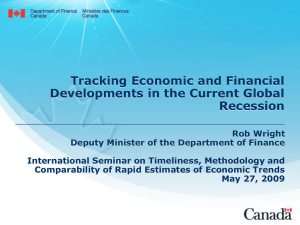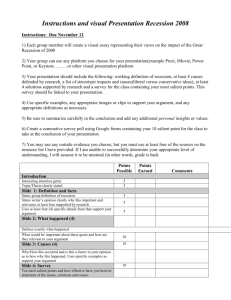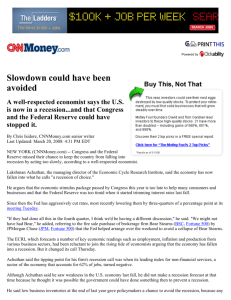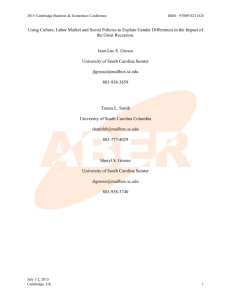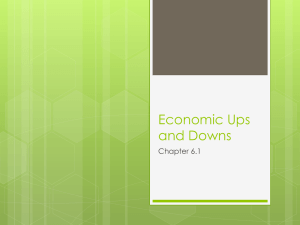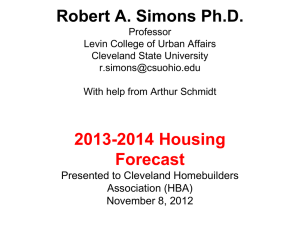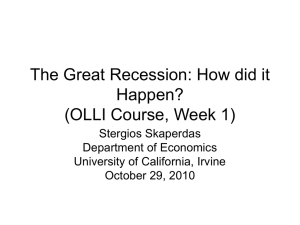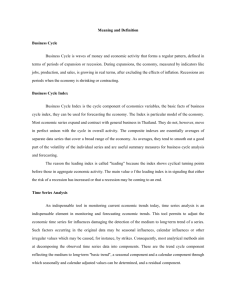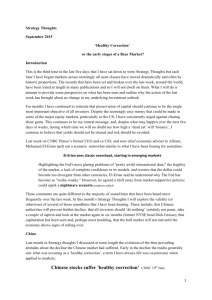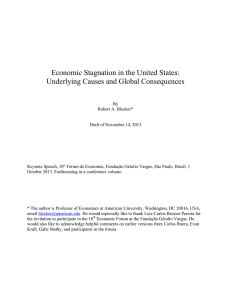CHAPTER 1
advertisement
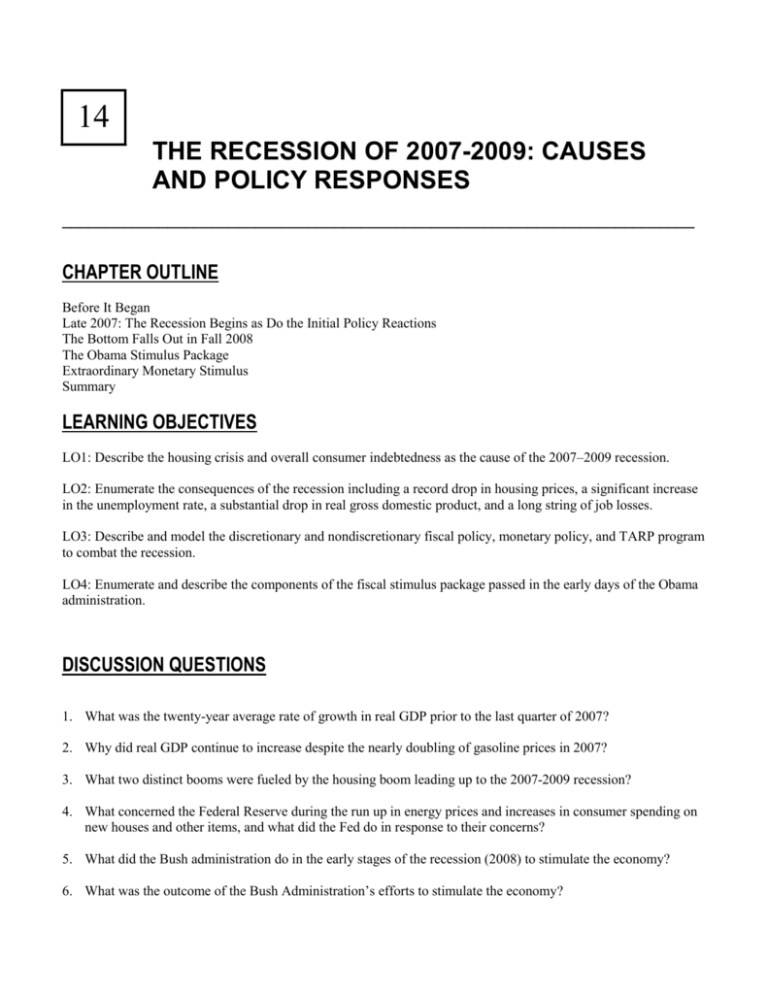
14 THE RECESSION OF 2007-2009: CAUSES AND POLICY RESPONSES ________________________________________________________________________ CHAPTER OUTLINE Before It Began Late 2007: The Recession Begins as Do the Initial Policy Reactions The Bottom Falls Out in Fall 2008 The Obama Stimulus Package Extraordinary Monetary Stimulus Summary LEARNING OBJECTIVES LO1: Describe the housing crisis and overall consumer indebtedness as the cause of the 2007–2009 recession. LO2: Enumerate the consequences of the recession including a record drop in housing prices, a significant increase in the unemployment rate, a substantial drop in real gross domestic product, and a long string of job losses. LO3: Describe and model the discretionary and nondiscretionary fiscal policy, monetary policy, and TARP program to combat the recession. LO4: Enumerate and describe the components of the fiscal stimulus package passed in the early days of the Obama administration. DISCUSSION QUESTIONS 1. What was the twenty-year average rate of growth in real GDP prior to the last quarter of 2007? 2. Why did real GDP continue to increase despite the nearly doubling of gasoline prices in 2007? 3. What two distinct booms were fueled by the housing boom leading up to the 2007-2009 recession? 4. What concerned the Federal Reserve during the run up in energy prices and increases in consumer spending on new houses and other items, and what did the Fed do in response to their concerns? 5. What did the Bush administration do in the early stages of the recession (2008) to stimulate the economy? 6. What was the outcome of the Bush Administration’s efforts to stimulate the economy? 2 Chapter 14 7. What significant event occurred in the credit markets on September 7, 2008 and what other credit market events quickly followed? 8. What two fiscal policies were embraced by the Obama Administration’s stimulus package? THE WEB-BASED QUESTION There are many websites dealing with the 2007-2009 recession. One of the more interesting sites, from an economics perspective, is recession.org (http://recession.org/ ), where you can find a tremendous amount of information. Visit the economic forum and explore postings by others in one or more of the areas that interest you. Copy and paste some of the more interesting postings into your answer for this question. Also, feel free to post comments of your own. ANSWERS TO STUDY QUESTIONS SUGGESTED ANSWERS TO THE DISCUSSION QUESTIONS 1. The twenty-year average rate of growth in real GDP prior to the last quarter of 2007 was 2.7% per year.. 2. In short, the answer is housing. Because lenders were eager to make home mortgage loans (first and second mortgages) and housing prices were appreciating, the resulting exceptionally high growth in house prices fueled economic growth during the first three quarters of 2007, despite the nearly doubling in gasoline prices. 3. The availability of credit secured by housing fueled new house construction and home equity lines of credit. People found large, new houses very affordable due to favorable lending terms, so they purchased the large, new houses. Those who did not buy a new house found the value of their existing house increasing rapidly, so they tapped into the equity created by the escalating house values using home equity lines of credit to buy other consumer goods, such as new cars, new flat screen TVs, etc. 4. The Fed was concerned that the increase in energy prices and consumer purchases would fuel inflation. The Fed responded to this concern by increasing the Federal Funds Rate from 1% in June, 2004 to 5 ¼% in June, 2006 in an effort to head off inflation by reducing the money supply. 5. The Bush Administration lobbied to make the tax cuts of 2003 permanent and to provide a tax rebate to taxpayers. Its attempt to make the 2003 tax cuts permanent failed, but congress did enact a tax rebate plan that sent checks for $600 and $1,200 to single and married tax payers, respectively. 6. The outcome of the Bush Administration’s efforts to stimulate the economy (see answer to question 2 above), was a short-term increase in economic growth, despite the underlying weakness of the economy. The Recession of 2007-2009: Causes and Policy Responses 7. The Treasury Department placed Fannie Mae and Freddie Mac (see Chapter 11) into conservatorship, because they were essentially bankrupt. Within a week, Lehman Brothers filed for bankruptcy, and two days later, the Fed lent AIG $85 billion. Two weeks later, the Bush Administration asked Congress for $700 billion for its Troubled Asset Relief Program. Another two weeks later, Wachovia, on the verge of bankruptcy, was purchased, with Fed assistance, by Wells Fargo. Within the span of two months, the financial system was on the verge of collapse. 8. The Obama stimulus package includes greater funding of nondiscretionary fiscal policy as well as funding of some discretionary fiscal policy programs. 3 4 Chapter 14 SUGGESTED ANSWER TO THE WEB-BASED QUESTION Answers from students will vary. As the instructor, you might ask students to share their answers with the entire class electronically.


